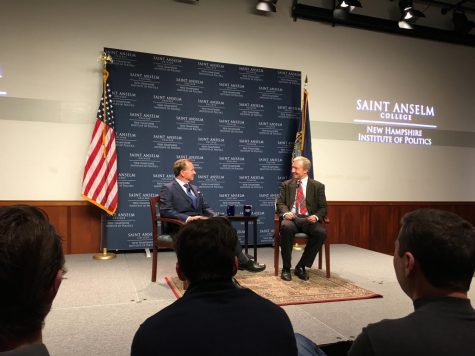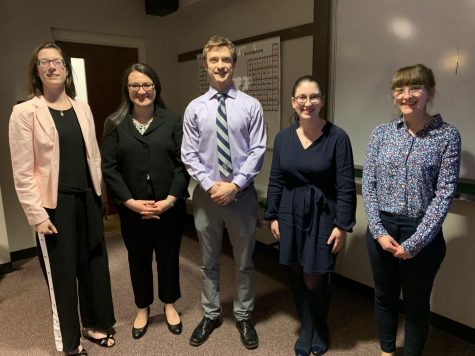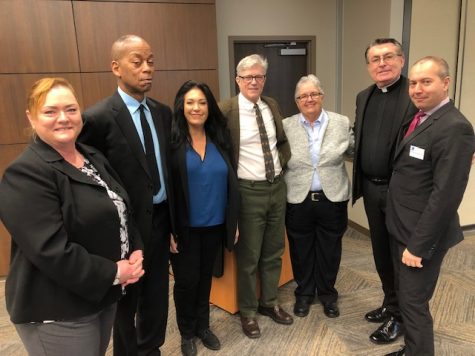Cows and contemplation: A center for the arts
November 12, 2018
Where can one find stained glass windows, priceless art, and cow creamers all in the same place? Chances are students on Saint Anselm Campus walk by it every day.
The Alva De Mars Chapel Art Center on the Saint Anselm campus unveiled two new exhibitions on October 12. The first exhibition, entitled “Preparing a Place”, centers around women modernists from the Chapel Art Center’s permanent collection and is partnered with “Farm to Table”, a collection of ceramic cow creamers from the eighteenth century.
Maggie Dimock, curator of the Chapel Arts center talks about the intrigue and eccentricities of the center from the past all the way into the current day.
Dimock has been the curator of the Chapel Art center for a year but has worked there since 2014. She is no stranger to the challenges of trying to get people involved and interested in art.
Most people only enter the Chapel Art Center when required to do so for their Conversatio class, yet Dimock does not see this is a bad thing.
She understands how overwhelming museums can be, noting that “not everything is going to be interesting to everyone and that’s fine. I don’t like everything in every museum.” Even someone who studies, works, and lives with art agrees that not everything in a museum will fascinate and engage every visitor.
So how do you get a campus full of college students interested in ceramic cows and contemporary art? Curiosity alone may not be enough and talking about the exhibitions in strictly technical terms would bore the less esoteric viewers.
Dimock recognizes that the current exhibition “is kind of a hard sell,” but elaborates that “we are trying to split it down the middle.” So, perhaps one may stumble into the Chapel Art Center one day after seeing 45 funky looking ceramic cows through the window and learn some interesting things. One could discover, for example, how some cows were painted with a black veneer to coincide with Queen Victoria’s period of mourning in the 17th century. If, however, British history is of little interest then, perhaps, one could learn about the collection of creamers that came from Bennington, Vermont, New Hampshire’s friendly cousin, which was once a center of ceramics and pottery in the late 18th and early 19th century.
With such insights, the collection at the Chapel Art Center may not seem so small and ancient. Although some may consider the Chapel Art Center just as traditional and antique as some other parts of the College, past exhibitions have proven this not to be true.
Dimock elaborated on a past exhibition involving modern day artist Anne Connell in 2016, entitled “Silent Heart”. To present this exhibit, the Chapel Arts Center borrowed from museums in London as well as from well-known authors like Ann Patchett and Elizabeth Gilbert.
Hearing Dimock elaborate on the art that she is so clearly passionate about is engaging in and of itself. She can often be found mingling with the exhibitions and taking great care to make the now retired chapel into a lively art showcase which features its own art.
Since its founding in 1967, the Chapel Art Center has housed many events, lectures, concerts, exhibitions and more. The center brings a variety of culture and beauty to the campus, and it is not bound to stop any time soon.
“I think that the world is becoming more inclusive,” says Dimock, “and museums as institutions are more interested in reaching out to people where they are rather than assuming that you need to already be an expert to come here and enjoy it.”
There is no reason to be wary of the quiet art room down the main hall of Alumni. You may not be an expert on art or even have ever been in a museum before, but you may see something that catches the eye. It could just be the painted ceilings that intrigue you, but whatever it may be, like Maggie Dimock says, “Just come,” and discover something new around a familiar corner.









